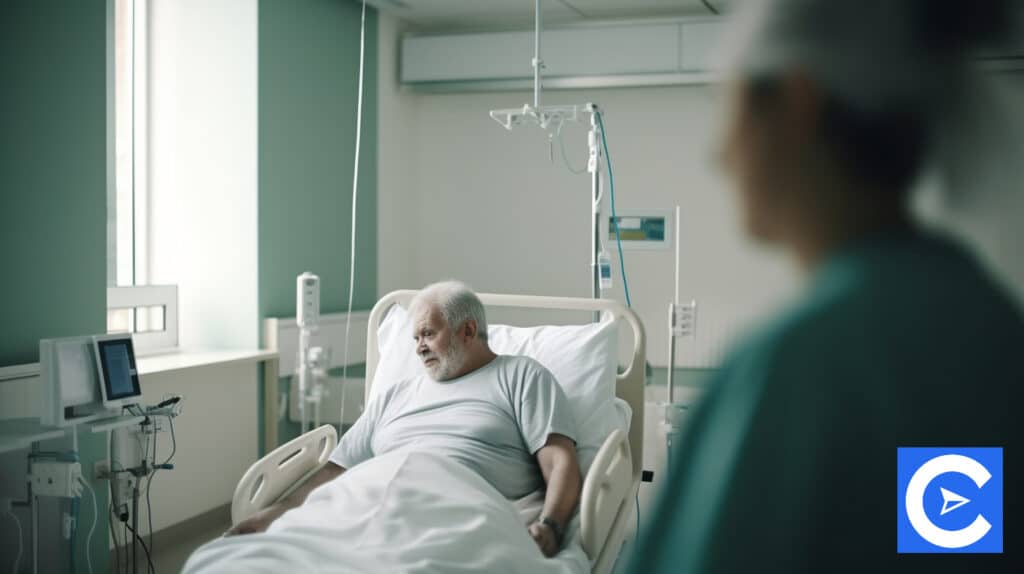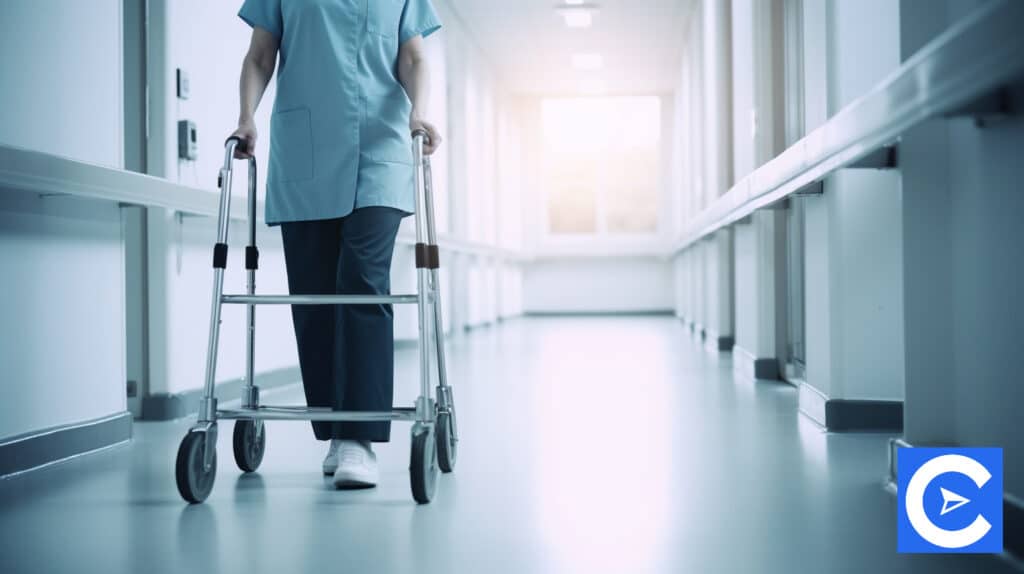Other Free NCLEX PN Study Guides:
There are 8 Modules in NCLEX PN Study Guide. Here you can navigate all the NCLEX PN Study guide modules.
- NCLEX Study Guide Home
- Module 1 | Coordinated Care Of the Patient
- Module 2 | Overall Safety and Control of Infections
- Module 3 | The promotion of health and maintenance
- Module 4 | Integrity in psychosocial functioning
- Module 5 | Providing Basic Care and Ensuring Patient Comfort
- Module 6 | Therapies: Pharmacological and parenteral
- Module 7 | Potential risk reduction
- Module 8.1 | Adapting physiologically
- Module 8.2 | Adapting physiologically
- Module 8.3 | Adapting physiologically
let’s get started right away.
Rehabilitation and functional status of patients

This section begins with activities of daily living (ADLs).
ADLs
These activities assess the return of normal function after a surgical procedure, for example.
As a result, they will be expected to continue these activities once they return home from the hospital.
ADL monitoring helps determine what level of rehabilitation a patient may require.
Additionally, they determine how the patient is progressing during rehabilitation.
There are three categories of ADLs:
- Personal/physical
- Instrumental
- Occupational
Patient rehabilitation
Rehabilitative programs help patients recover from injuries or diseases by regaining their function.
There are many types of rehabilitation, including physical therapy and drug and alcohol treatment.
The treatment can take the form of occupational therapy for patients who are physically or mentally ill.
Rehabilitation can take place in the following settings:
- Long-term acute care in a hospital setting
- Subacute care units
- Inpatient rehabilitation facilities
- Outpatient rehabilitation facilities
Rehabilitation will begin with an extensive evaluation of the patient.
Aside from determining whether the rehab will be successful, it will also prevent secondary complications.
Occupational therapy
In this practice, creative activities are used to treat people who are physically or mentally disabled.
Providing them with the skills they need to live a full life and become independent is the goal.
They should reach their maximum potential after therapy, whatever it may be.
In order to achieve this, patients are given a variety of interventions based on their disability.
A home visit as well as a visit to the patient’s workplace may be necessary to provide adaptive solutions to any problems they may encounter.
In addition to receiving specific training, patients will receive regular assessments of their various skills.
A patient’s coworkers, friends, caregivers, and family will also receive training/education from an occupational therapist.
Training: Bowel and bladder

Bladder training
Your coursework includes several approaches to bladder training, including:
- Scheduled toileting: This refers to a patient using the toilet on a set schedule, usually every two to four hours
- Habit training: This involves matching a patient’s voiding habits with their scheduled toileting times using a toilet diary
- Prompted voiding: Nursing homes often use this method of making patients ask to use the restroom
- Bladder retraining: Patients are encouraged to hold off on urinating until they reach a scheduled time to do so. In an effort to restore normal bladder function, this procedure is used and helps in about 80% of incontinence cases.
Bowel training
During this form of training, a bowel diary is used to track progress.
The following will be included in this diary:
- Scheduled defecation
- If stimulation was necessary, for example, drinking hot fluid
- Position
- If there was any straining
- If exercise helps to increase bowel motility
To manage fecal impaction or constipation, the following strategies may be helpful:
- Manual impaction removal
- Enemas
- Drinking more fluids
- Exercise
- Stopping medication that might cause constipation
- Monitoring fluid intake and diet
- Monitoring fiber intake
During this process, fiber is extremely important as it facilitates bowel movements.
Classification of wounds

The following are the most common classifications of wounds:
- Vascular wounds
- Neuropathic wounds
- Pressure ulcers
- Traumatic wounds
- Surgical wounds
- Infected wounds
- Self-inflicted wounds
- Dysfunctional healing wounds
Please make sure that you read your coursework that covers the Modified Wagner Ulcer Classification System for Foot Ulcers.
There are five grades used in the system.
These are from grade 0 (no open ulcers, but at risk) to grade 5 (amputation needed due to gangrene).
In addition, you will find reference to the S(AD) SAD Classification System, which uses grades but considers five categories in addition as well.
There are five categories used here: area, depth, sepsis, arteriopathy, and denervation.
Pressure ulcers

The first step in ulcer assessment is to determine whether the ulcer is a pressure ulcer or not, as this will influence the treatment plan.
It is also important to follow these steps:
- Ulcers are classified according to their size, characteristics, and stages of development
- Patients should be asked about the pain they experience from the ulcer
- An ulcer photograph should be taken if protocols deem it necessary
- If any changes to the ulcer occur, they should be noted each day
- Frequently check the ulcer for infection
Causes
How do pressure ulcers develop?
The main reasons are as follows:
- The intensity of the pressure
- The duration of the pressure
- The tissue’s tolerance to that pressure
Management
The first step should be to encourage patients to be as mobile as they possibly can.
Pressure ulcers are caused by lying in bed and placing pressure on certain parts of the body.
Those who are bedridden cannot be mobile, however.
To aid in this, they can receive active bed exercises, or passive ROM exercises, if possible.
An occupational therapist develops an activity plan for patients who are limited in their movements.
It is also important to control fecal incontinence and take measures to prevent tissue deterioration.
In addition to increasing the risk of developing pressure ulcers, this can contaminate existing ones.
Once the cause of incontinence is identified, a strategy can be developed to control it.
Prevention
Medical facilities should assess patients for pressure ulcers based on their individual risks.
Among these risk factors are:
- Immobility and inactivity
- Incontinence and moisture
- A nutritional state that’s poor
- Friction
- Sensation that’s decreased
- Fragile skin
- Some medications
In order to prevent pressure ulcers, patients can be turned and repositioned as well as supported.
The coursework covers all of this thoroughly, and you can browse it there.
Interventions: Alternative, complementary, non-pharmacologic

Conventional medical treatment is often used to help patients, but complementary therapies can also be beneficial.
This includes:
- Whole medical systems
- Mind-body medicine
- Biological medicine
- Manipulation
- Energy medicine
As listed above, each of these sections is thoroughly explained in your coursework, and you can look them up there if you’re unsure.
Postmortem: Care and services

Postmortem care
Upon death, the body begins to decompose.
The process of livor mortis begins when the red blood cells break down and blood vessels become porous.
Lividity occurs when blood pools in various parts of the body and the body appears gray overall.
Rigor mortis
It is common for the deceased’s muscles to stiffen and their limbs to become extremely rigid after death.
Patients become stiff for up to four days after dying because muscle tissue breaks down.
Postmortem care

Prior to being transported to the morgue, the body must be properly prepared.
In order to ensure that the deceased’s body is respected, everything should be done behind closed doors.
Aside from placing dentures in the mouth, the staff should close the deceased’s eyes (if they are open).
The body should then be washed and covered, while the machinery should be removed and the area where the line was inserted should be dressed.
Before the body is labeled, it is placed in a plastic body bag and placed on a morgue cart.
In your coursework, you will find the procedures for death pronouncement as well as what documentation will be needed.









